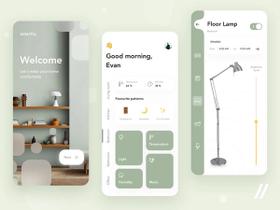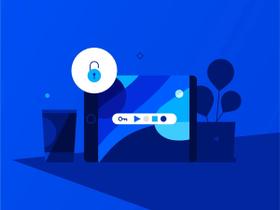How Much Does It Cost to Develop an IoT Application: A Case Study-Based Roadmap
Published: February 27, 2024
12 min read
In this article, you'll learn:
1
❓ What Influences IoT Development Cost?
2
🔍 What are the So-Called “Hidden Costs” for IoT Development?
3
📉 How to Safely Reduce IoT App Development Cost and Avoid Money Waste?
4
🔑 Our Expertise in Determining Development Costs for IoT
5
💡 Takeaways
Various IoT solutions require a custom approach and it’s almost impossible to present a precise estimate that may be referred to as a generalized one. The custom approach supposes creating a unique software solution, the uniqueness of which will significantly impact the total cost.
❓ What Influences IoT Development Cost?
IoT app development cost for enterprises is never fixed, as it changes under specific circumstances. Let’s take a closer look at aspects that usually influence the costs of delivering an IoT solution.
Targeted platforms
IoT software development cost will vary, often influenced by IoT trends, depending on the desired platforms for the project. Whatever your business goals are, you pick the most suitable platform among desktop, web, and mobile to build an IoT solution.
We at Stormotion create Internet of Things software with the amazing React Native framework. It gives us an opportunity to deliver products for several platforms (iOS, Android) at the same time lowering Time-to-Market and expenses. This level of efficiency we are able to reach as React Native allows us to reuse different pieces of code for those other platforms.
To manage IoT development costs effectively, we recommend starting by launching your product on the platform most preferred by your customers. Later on, you may launch the solution on the other platform, if it becomes necessary.
In turn, React Native makes the IoT app development process for both mobile platforms less complicated. Thus, you don’t have to seek assistance from different teams to integrate a new OS, when it all can be done by one 😉
Prioritize the functionalities and features you'd like to have in your project by dividing them into the vital ones and the ones that aren’t so necessary at the first stage. This will help you to understand how much your project’s core costs and what the cost of further development stages is. This will also help you to cut off all the features that are not that essential at first, decreasing the initial expenses.
UI/UX interfaces
In our opinion, one of the most valuable aspects of IoT software design is user-friendliness. The easier it’s to use the app — the better retention rate you may expect. The complexity of your project's design can significantly influence the cost of IoT mobile application development, leading to variations in the overall development expenses. We recommend sticking to non-complex and intuitive design decisions in order not to overload the user's experience along with the project’s budget.
We’d like to list several inner aspects that affect IoT product development costs and speed up the delivery at the design stages:
-
General practices. It’s quite common to observe the tendencies and decisions that are used among the companies of your segment. If there’s a common design decision found in different companion apps, there’s no need to complicate the development by trying to invent something extraordinary. The main advice if you prioritize lower costs and faster development — stick with simplicity.
-
Responsive design. On one hand, it’s a significant challenge for designers to predict and adapt your project’s interface to every possible smart appliance, however, it may create excessive spending that isn’t so essential from the start. Our advice is to determine several main devices at the design stage and focus on development, as you can always adapt to new ones in the future when it becomes necessary.
-
Existing libraries/decisions. We recommend implementing more already existing libraries and features that perform essential functions to lower your expenditures. If your goal is to make a good product without spending tremendous amounts of money — don’t overlook taking existing design solutions and prototyping tools into consideration. It’s always cheaper to give up a few potential features than to design everything from scratch.
🔍 What are the So-Called “Hidden Costs” for IoT Development?
Considering IoT software creation with the help of a Tech Team, you always stick to the numbers provided by the specialists you hire. However, this number doesn’t always include the expenditures on the third-party services that your project requires.
This includes various platforms for managing databases, making cloud computing effective, or gathering statistics. Here are some of them, that you may require in your project development:
- Firebase. This is a platform that allows you both to build and monitor your future software. Providing you with the tools to synchronize and store your data conveniently, it also ensures a high security level and scalability for your project. Firebase is a unique service that lets you set up your authentication even if you require an Identify Platform implementation. Among all the features for cloud storing and data structuring it also allows you to gather precise statistics and performance monitoring with the help of Google Analytics, Crashlytics, and TestLab.
- Hygraph. The Federated Content Platform that allows the creation of a unified content layer from any source for further delivery to any required platform. It uses a GraphQL API to set up a unique federation approach to distributing your content from any place to selected platforms. Hygraph also provides you with an easy-to-use content management interface with schematization features to structurize your content in your own way.
- DigitalOcean. In case you have your own database already set up, you need a platform to deploy an IoT app for proper cloud-based computing and storing features. DigitalOcean is one of such services that provide an easy code deployment along with granting a top-tier security level for your project. Quick API integration is also one of the trump cards of this platform, making adding features to your software less complicated.
There are many examples of third-party services that may come in handy for the success of your IoT project, including those aimed at wearables. Every single of them has its monthly/annual cost that shouldn’t be overlooked in your budget estimates.
📉 How to Safely Reduce IoT App Development Cost and Avoid Money Waste?
As the variety of solutions is so vast, it’s hard to determine what you should do to reduce the IoT software development costs. However, we’d like to share some tips that will help you make your development costs сlean of excessive spendings.
Conduct a proper Project Discovery Stage
We recommend you not underestimate the Discovery Phase in a project’s lifespan and consider outsourcing this phase to specialized firms that can conduct it efficiently and cost-effectively. Obviously, conducting the DS costs much less than it may cost you to deal with the consequences of improper planning. If you focus on prevention, such as integrating notifications compatibility in the planning phase, and not on the cure, it’ll significantly save your finances, as fixing errors costs way more than thoroughly planning on their prevention.
For a better understanding of what a Project Discovery Stage is, feel free to click the link down below and acquaint yourself with how it’s usually done.
Learn more about an MVP here:
In fact, considering initial cross-platform development, guided by skilled engineers, allows you not only to reduce the IoT platform development cost but also significantly lower the costs to maintain and modify software for your project, highlighting the benefits of a unified development approach.
We recommend finding a team that specializes in the IoT app development process using a specific Tech Stack. For example, if your goal is to create a companion app for both iOS and Android, React Native developers are the best partners for you. As it allows to create a common codebase for both platforms, making the development and maintenance much easier.
🔑 Our Expertise in Determining Development Costs for IoT
As an IoT mobile app development company, we can say that calculating the exact cost of developing an Internet of Things application is very challenging. Each application is unique in its own way, but there are several key features that are taken into account when calculating the cost for any application.
Here, we have compiled the main stages of the IoT app development cycle with an approximate calculation of the time and cost involved:
The biggest time-saver for this project was obviously the fact that we had those boat batteries present in our office. This allowed us to spend less time on connectivity and testing stages, along with making it less damaging for Norsk Lithium’s budget for this project. Eventually, the Norsk app is now on the showcase of Stormotion’s successful IoT projects, having provided both quality design and usability for Norsk’s customers.
💡 Takeaways
To sum up, estimating the IoT app development cost for projects is generally challenging. The more ideas and features you want in your product, the higher expenditures you should expect.
Many factors from targeted platforms to user interface design impact the final costs, so it depends on your priorities. If you aim to create full-fledged software with every single feature that you could think of along with an outstanding design, get ready to spend a lot. On the other hand, if your priorities are the development speed and minimalistic design with the core functionality, the development will cost significantly lower.
Was it helpful?
Questions you may have
Take a look at how we solve challenges to meet project requirements
Are there any ongoing maintenance or support costs after the initial development?
Yes, operating costs appear when the IoT solution starts functioning, which includes software licenses and establishing cloud hosting. These are considered as “operating” costs.
Can you provide a breakdown of the cost components, such as hardware, software development, testing, and deployment?
The cost structure for IoT integrations includes production costs (hardware components and factory costs), development costs (custom software creation, researching data protocols), and operating costs (software licenses, cloud hosting).
Do you charge on an hourly basis, fixed project cost, or another pricing model?
An IoT application development costs depend on various factors and are typically estimated based on hourly rates of IoT developers, platforms, and interconnected devices. However, for specific pricing models, it's best to contact us directly.
Are there any additional expenses I should be aware of, such as licensing fees or cloud service costs?
Yes, third-party services required for project development, like Firebase, Hygraph, and DigitalOcean, come with their own monthly/annual costs that should be considered in the budget.
How do you handle changes in project scope, and how would those impact the overall cost?
Changes in the project scope have a minimal impact on our work, as we pay special attention to important stages in the IoT application development: Project Discovery Stage and MVP development. It helps to manage changes efficiently and avoid unnecessary expenditures.
Can you provide a timeline for the development process, including key milestones and delivery dates?
A detailed project timeline, including key milestones and delivery dates, would depend on the project's complexity and scope. For example, Norsk Guardian involved 7 people and took about 30 weeks of work.
What factors might lead to cost overruns, and how are they addressed?
Factors leading to cost overruns include inadequate planning, excessive feature inclusion, and unexpected technical challenges. Early Quality Assurance and starting with an MVP can help address these issues.
Are there any potential cost-saving measures or alternative solutions that we should consider?
Cost-saving measures include conducting a proper Project Discovery Stage, starting development with an MVP, early Quality Assurance, and considering initial cross-platform development.
Do you offer different pricing options or packages based on the level of complexity or features required?
The costs vary based on the project's complexity and desired features. Contact us for tailored pricing options.
Will there be any recurring costs associated with data storage, bandwidth, or third-party integrations?
Yes, there will be recurring costs for services like cloud-based platforms, data management, and third-party integrations, which are essential for the operation of IoT solutions.
How do you handle unexpected technical challenges or issues that may arise during development?
As an IoT app development company, we emphasize the importance of early Quality Assurance to foresee and prevent many issues. This approach helps manage unexpected challenges effectively.
Can you clarify any hidden or miscellaneous costs that might not be immediately apparent?
Hidden costs can include expenditures on third-party services required for project development, such as platforms for managing databases and cloud computing.
Are there any long-term cost considerations, such as future updates, scalability, or security enhancements?
Long-term cost considerations include future updates, scalability of the IoT solution, and ongoing security enhancements, which are crucial for maintaining the functionality and security of IoT applications.
Are there any cost-saving opportunities through open-source software or existing IoT frameworks?
You can implement existing libraries and features to lower expenditures. Using open-source software or existing IoT frameworks can be a cost-saving opportunity too.
Read also

How to Build an IoT Application: The Way to Success

How to Develop a Companion App for Smart IoT Devices

Top IoT Security Challenges and How to Deal with Them
Our clients say
![Stormotion client Alexander Wolff, CPO from [object Object]](/static/a16ba3c9580effc3ab9a68d115eadffe/b0e74/alex.png)
When I was working with Stormotion, I forgot they were an external agency. They put such effort into my product it might as well have been their own. I’ve never worked with such a client-focused company before.
Alexander Wolff, CPO
Sjut
